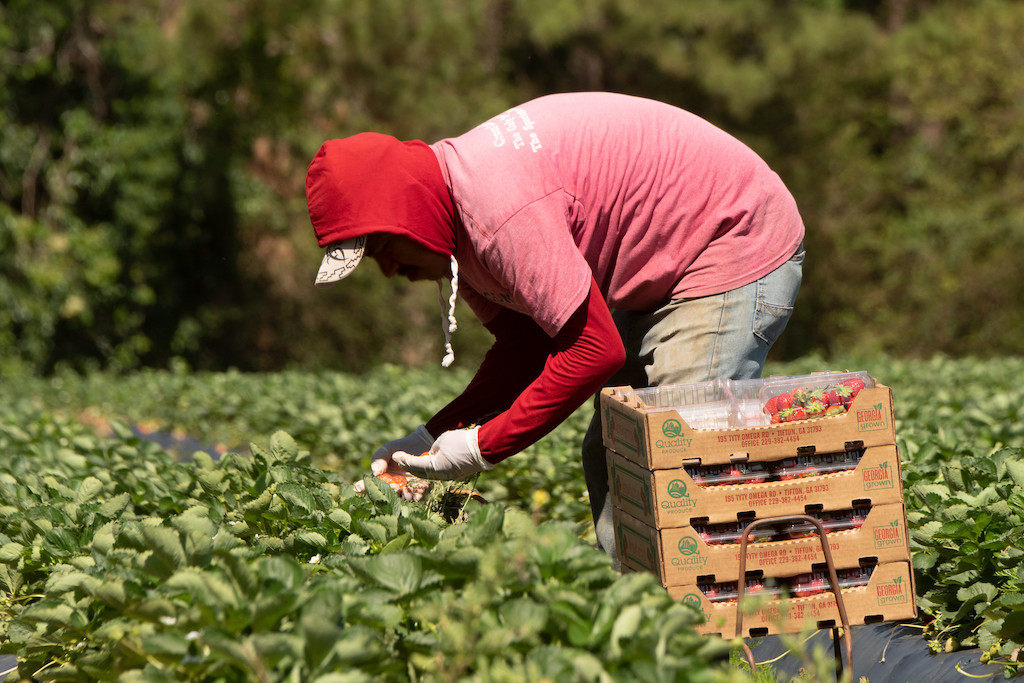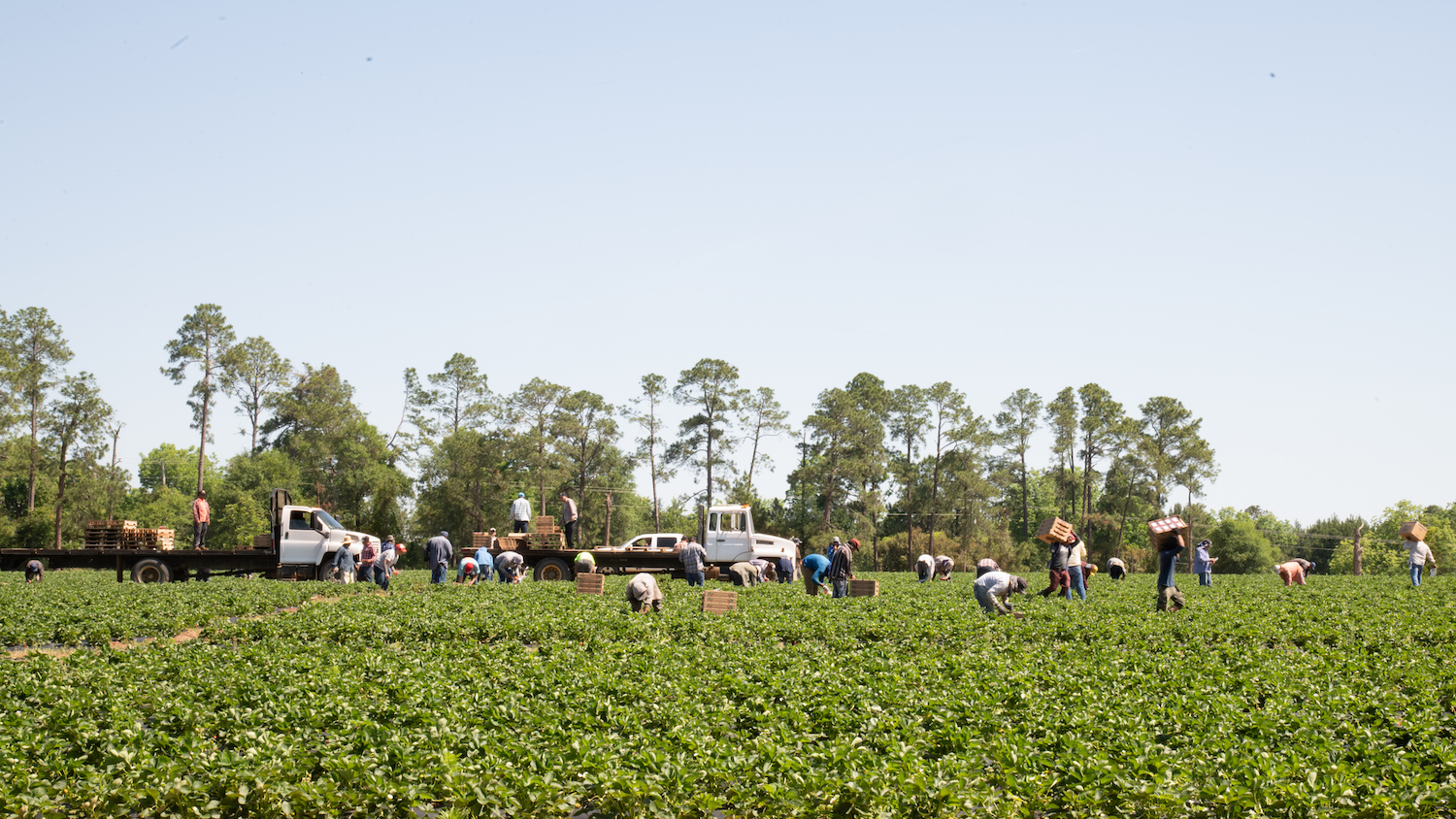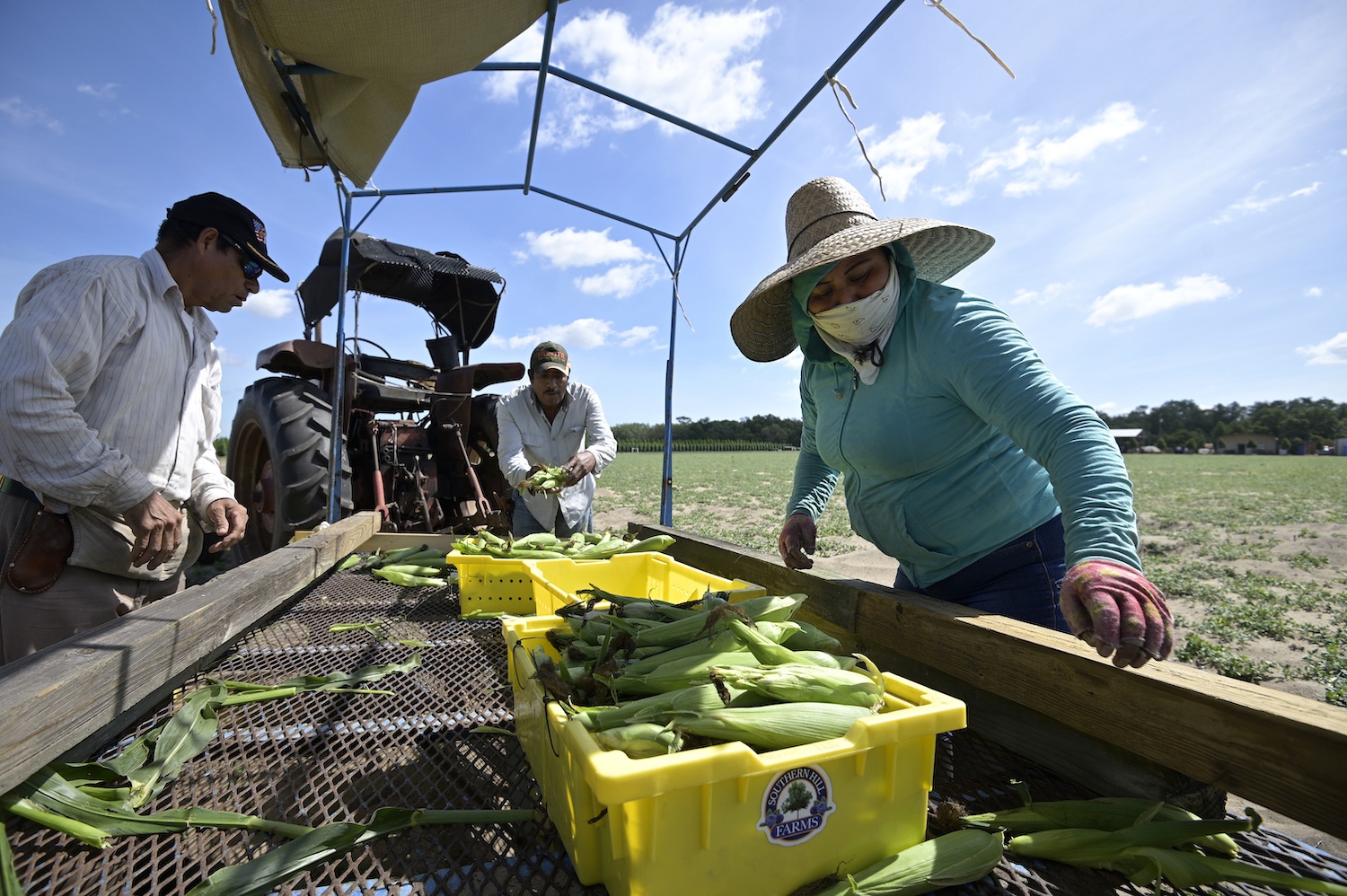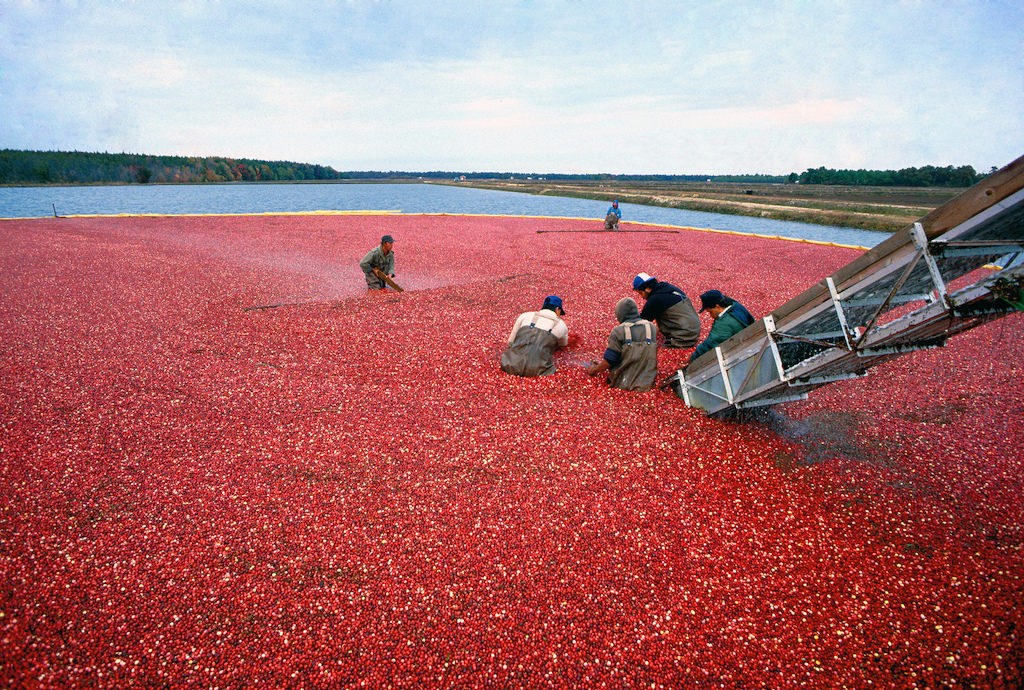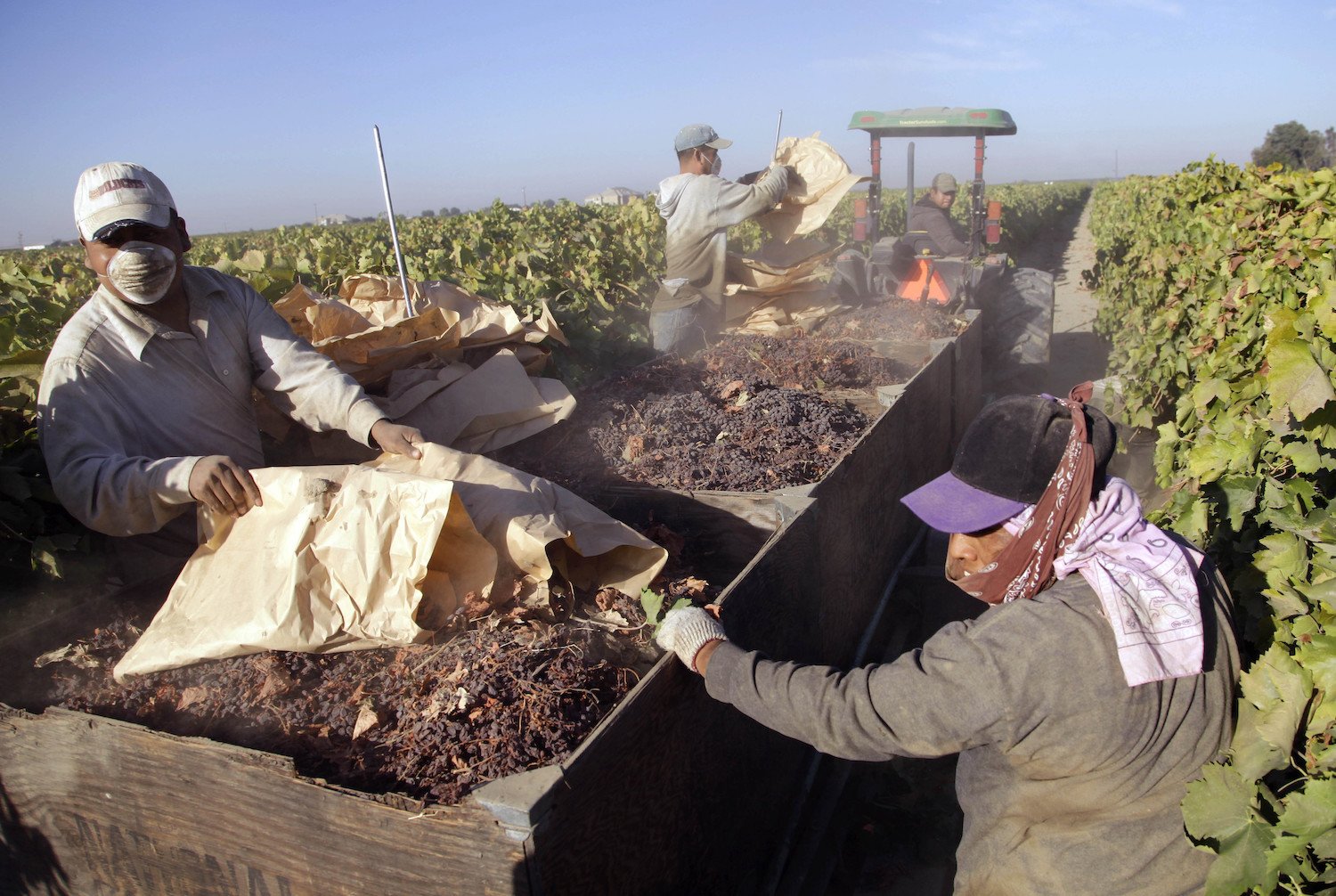
AP Photo/Gosia Wozniacka
The Department of Agriculture’s farm labor survey is supposed to determine 2021 wages for nearly 205,000 workers. The agency cancelled it with less than two weeks’ notice.
Seasonal farm workers could see a significant drop in their earnings come 2021, after the Department of Agriculture (USDA) announced last week it was suspending a long-established report that informs minimum wage standards for nearly 205,000 agricultural employees nationwide.
Until now, USDA has conducted quarterly labor surveys of U.S. farms to estimate how many farm workers are employed in the country and how much they’re paid. The Department of Labor (DOL) then uses USDA’s findings to set state-by-state minimum wage rates for the H-2A visa program—a popular pathway that allows U.S. farms to hire workers from abroad on a seasonal basis.
Farmers are required to pay H-2A workers a minimum of what is known as an “adverse effect wage rate” (AEWR), a pay floor that is usually much higher than state and federal minimum wages. For example, the AEWR in Washington, which relies heavily on H-2A workers, is $15.83 per hour compared to a federal minimum of $7.25 and a state minimum of $12.00. The rationale behind the AEWR is to prevent farms from relying on the program at the expense of American workers.
USDA’s most recent farm labor survey was scheduled to be conducted in mid-October, and a report on its findings was set to be published in November. That is, until last Wednesday when USDA announced that it would no longer run the survey or its associated reports, because it “determined the public can access other data sources for the data collected in the Agricultural Labor Survey.” Left unsaid, however, was how DOL would gather crucial information needed to set minimum wage standards. (A spokesperson for DOL declined to comment, citing ongoing rulemaking within the agency.)
“By eliminating the wage survey, the Trump administration is eliminating the data about farmworker wages that are needed to set the wage rate to protect them.”
Farmworker advocacy groups immediately rang the alarm on potential repercussions of USDA’s unexpected move. The worst-case scenario for seasonal workers: Without a mandated AEWR, employers would only need to pay them a state or federal minimum wage, based on H-2A program rules.
“By eliminating the wage survey, the Trump administration is eliminating the data about farmworker wages that are needed to set the wage rate to protect them,” said Bruce Goldstein, president of Farmworker Justice, a legal advocacy organization for farmworkers. “It’s incredibly cruel at any time to cut the wages of farm workers …. but it’s especially cruel during a pandemic.”
DOL typically announces annual AEWRs in December, one month before they take effect. This announcement’s timing adds a lot of uncertainty to farmworker compensation in 2021.
“The fact that USDA didn’t announce [this move] until well into the fall is going to have the effect of having advocates scrambling to deal with this regulation,” Virginia Halden, attorney at the Pennsylvania Farmworker Project. “There’s not a lot of time between now and when H-2A workers start arriving for next year to figure out what to do in the vacuum.”
“There’s not a lot of time between now and when H-2A workers start arriving for next year to figure out what to do in the vacuum.”
It’s unclear whether DOL can still set AEWRs for 2021 without the USDA farm labor survey. Daniel Costa, director of immigration law and policy research at the Economic Policy Institute, pointed out that it might simply choose to retain this year’s AEWRs for next year. This would avoid a potential significant pay cut, but it wouldn’t reflect any wage increases observed in 2020.
In its announcement on the Federal Register, USDA justified its move by arguing that the labor survey is redundant with other research products. But Costa called it a “gimmick” that could effectively lower wages while evading the standard rulemaking process. (We’ve reached out to USDA for comment, and will update this post if the agency responds.)
“[USDA and DOL] are not technically putting out some regulation or a new rule that concretely says ‘We’re lowering wages,’” Costa said. “But the practical impact of what will end up happening is that wages will be lower….They can say with a straight face, ‘We’re not lowering wages.’ But they actually are.”
This isn’t the first time that the Trump administration has indicated its intention to reduce farmworker pay.
“We are in the context of an election. Politically, it’s like sending a message to the farmers that, ‘Hey, we’re doing something else for you.’”
Last year, DOL issued a proposal that would lower H-2A wages for those farm workers who primarily work in fields—as opposed to more specialized positions like equipment operators—and shift some of the program’s travel costs from employers to workers. In April, NPR reported that USDA was working with the White House to find a way to lower farmworker pay, supposedly to lessen the economic impacts of the coronavirus pandemic on farmers. Costa suspects that the cancellation of the farm labor survey was the result of those reported discussions.
Ag industry groups have long called on Congress to lower AEWRs or do away with them altogether, especially as reliance on the H-2A program has surged. In 2019, DOL certified a record-high 257,700 H-2A jobs, the large majority of which were filled. “Excessive labor costs in the U.S. put domestic producers at a competitive disadvantage,” a coalition of farmers groups wrote in a letter to Congress this January.
USDA has taken numerous steps to soften the brunt of the pandemic on farm employers in the past few months. So far, the agency has issued emergency rules that cut red tape around the H-2A program to stave off potential labor shortages, and distributed nearly $15 billion in direct payments to producers to make up for pandemic-related income losses. While USDA hasn’t explicitly said that its most recent move is related to the pandemic or labor cost concerns, Costa speculated that it effectively grants farmers what they’ve long been asking for.
“We are in the context of an election,” he said. “Politically, it’s like sending a message to the farmers that, ‘Hey, we’re doing something else for you.’”
Update: A previous version of this article stated that there were 257,700 H-2A workers in 2019. That value reflects the number of H-2A positions that DOL certified, some of which did not get filled. We’ve updated the post to reflect this.

